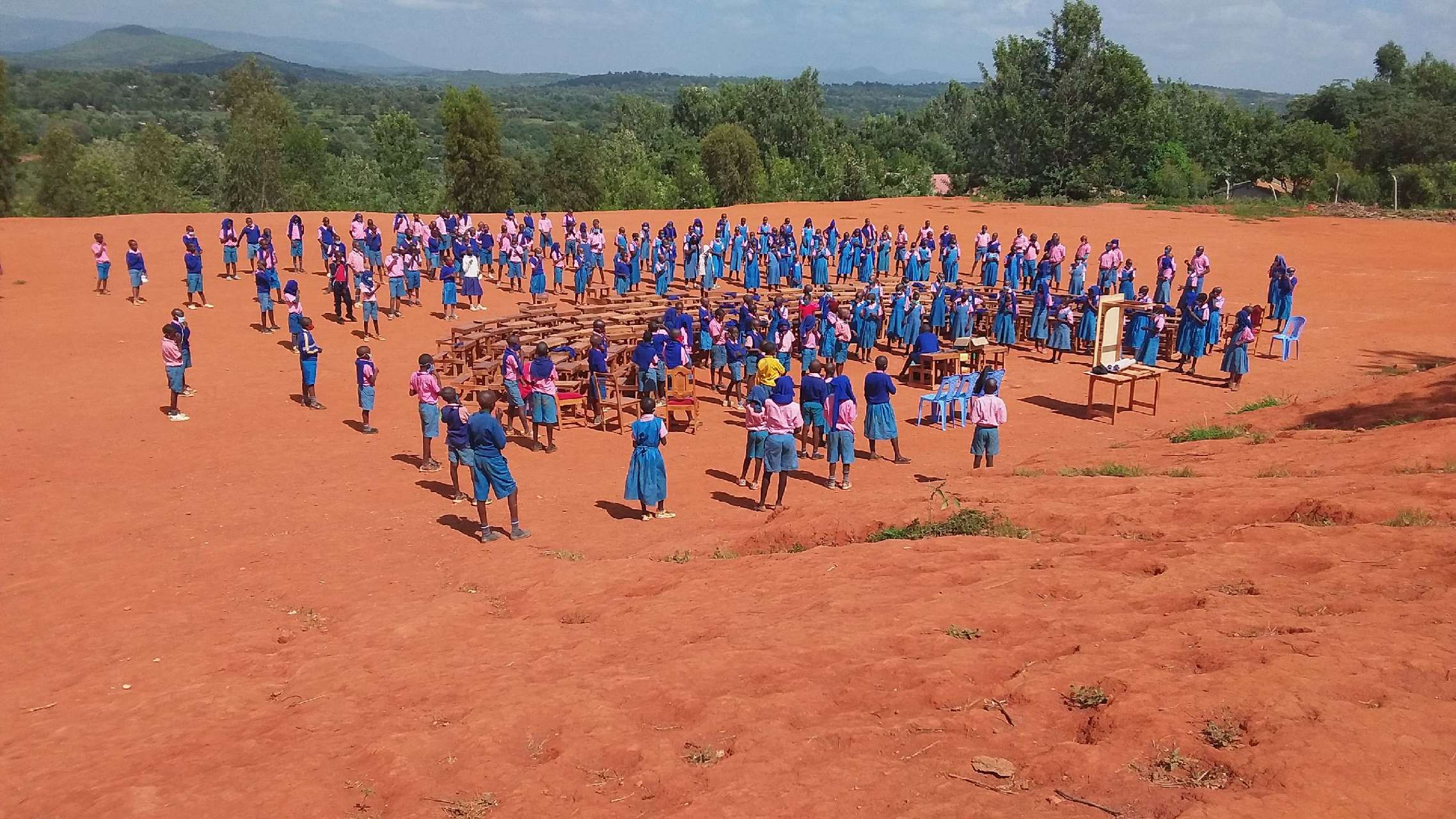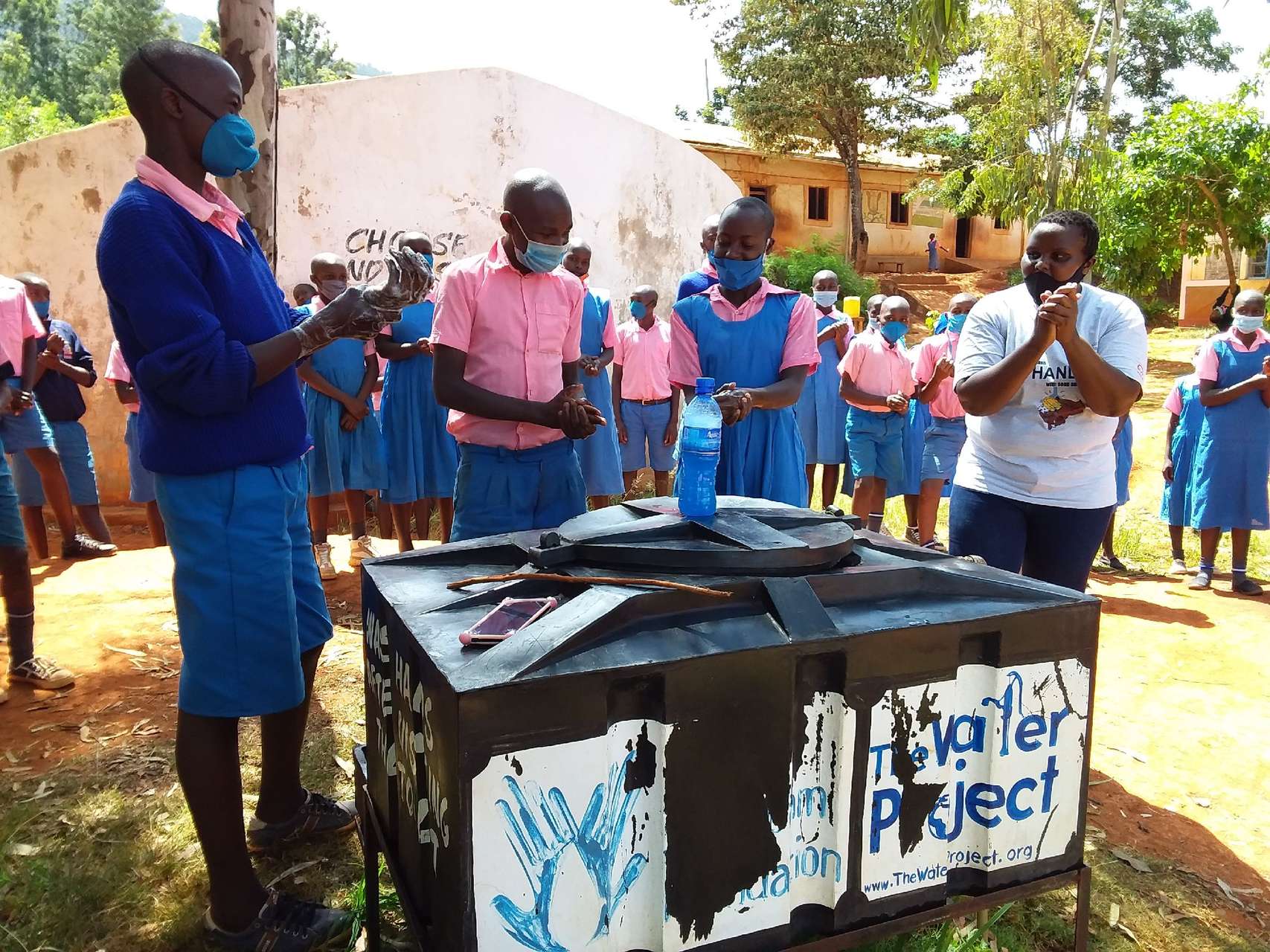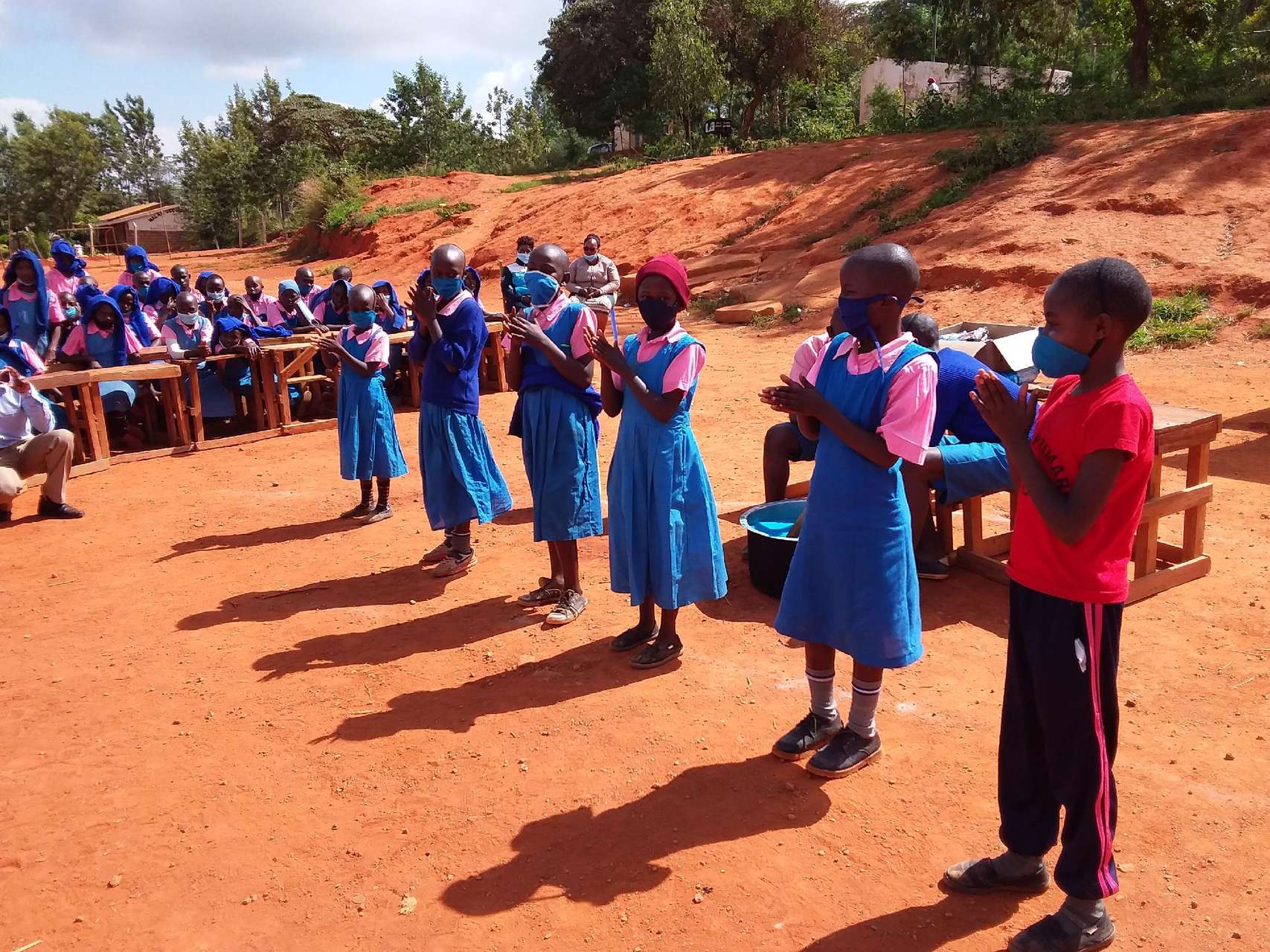Adjusting to a new normal to prevent COVID-19 at schools

Students at Malaa Primary School physically distance during our COVID-19 training.
The students and teachers at Malaa Primary School in southeast Kenya are adjusting to a new normal. School is back in session, but it includes many new protocols to prevent the spread of COVID-19.
“The virus continues to spread, but we are taking measures to keep ourselves safe,” said teacher Peter Wambua.
We spoke with Peter as a part of our recent COVID-19 sensitization at the school. Our teams in both southeastern and western Kenya have been visiting schools to offer hygiene and sanitation support since schools reopened in January. We cover topics including handwashing, mask-wearing, and physical distancing, and we address myths and rumors about COVID-19.

Students participate in a handwashing demonstration.
“In the training, we learned how to ensure that we have washed our hands well, and it was demonstrated, so now we will make sure we wash our hands well and ensure that all water points have soap,” shared student Hilda.
We checked in with Peter and Hilda to hear how things are going now that school is back in session and how the school closings impacted them. The following is what they had to say.
How were you impacted by schools closing due to COVID-19?
“I am in class seven now. I would be in class eight and would have finished school this year now. I have an extra year to read. We had to come back and learn, and some of us had forgotten what we learned 9 months ago,” said Hilda.
“Our lives changed because we used to come to school daily, and now we didn’t have to come to school. I missed teaching and interacting with other teachers,” said Peter.
What did you miss the most while school was closed?
“I missed learning and also interacting with my friends,” said Hilda.
How do you feel about the virus? Do you have any worries about it?
“The virus is killing people in the country, and it’s worrying,” said Hilda.
“The virus continues to spread, but we are taking measures to keep ourselves safe,” said Peter.

Students participate in the COVID-19 training.
How do you feel about being back at school?
“I am happy now and can continue with my education,” said Hilda.
“It is a great experience, and now we can learn and interact with the pupils – while keeping distance and wearing masks to keep safe,” said Peter.
How has the school managed since reopening? How are the students and staff dealing with all of the changes?
“It’s a daily task, especially for grade one learners. We are encouraging them to follow rules of social distancing and washing of hands constantly. They are adapting,” said Peter.
What is one thing that has changed at your school since the installation of this water point?
“The school has sufficient water all year round, pupils have clean drinking water, we have water for cooking, and fewer cases of waterborne diseases,” said Peter.
“We have enough water in school for drinking and washing of hands,” said Hilda.
This post is part of a series by The Water Project meant to highlight the perspectives and experiences of the people we serve and how the COVID-19 pandemic is impacting them. We invite you to read more of their stories here.
Home More Like ThisTweet